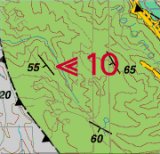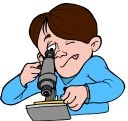
Worksheets and No Prep Teaching Resources
Reading Comprehension Worksheets
Earth Science
Map Skills

Earth Science
 Worksheets and No Prep Teaching Resources Reading Comprehension Worksheets Earth Science Map Skills |
 Earth Science |
| edHelper's suggested reading level: | high interest, readability grades 6 to 7 | |
| Flesch-Kincaid grade level: | 7.25 |
|
Dirt Maps
By Trista L. Pollard |

|
 1 Do you think every place on Earth has the same type of soil or dirt? If you said no, then you are right. In fact, our planet has various types of features depending on the climate and location of the area. To keep track of these earth materials, scientists use geologic maps and soil maps.
1 Do you think every place on Earth has the same type of soil or dirt? If you said no, then you are right. In fact, our planet has various types of features depending on the climate and location of the area. To keep track of these earth materials, scientists use geologic maps and soil maps. |
Create Weekly Reading Books
Prepare for an entire week at once! |
| Leave your feedback on Dirt Maps (use this link if you found an error in the story) |
 |
Earth Science
|
 |
Map Skills
|
 |
Special Education Science Materials for Teachers
|